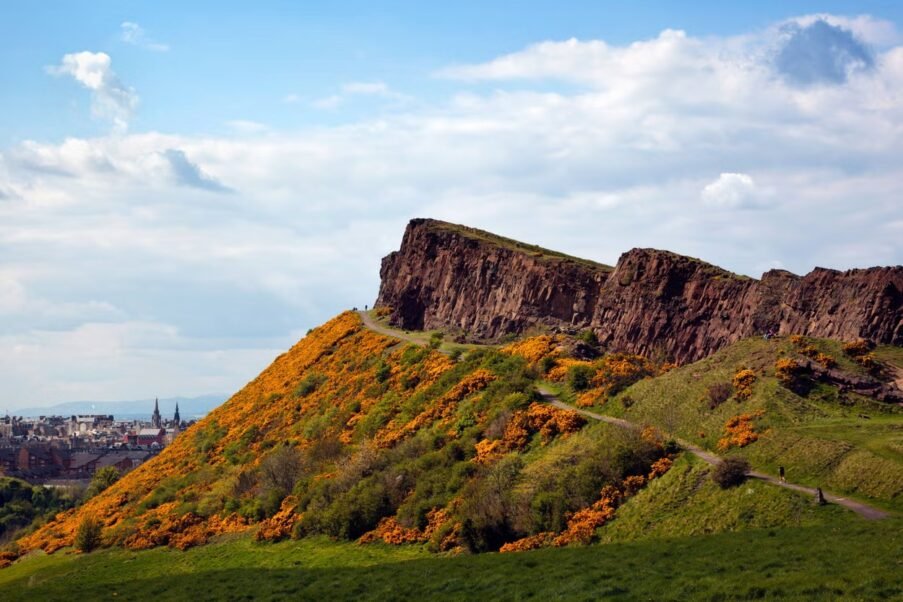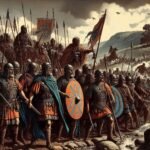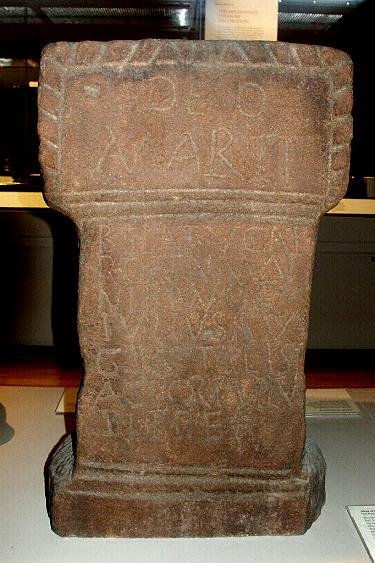
Arthurs Seat – Edinburgh – Independent
Contents
- 1 Was Edinburgh an Iron-Age oppidum?
- 2 Iron Age Remains in Edinburgh
- 3 The Iron Age Hillfort at Castle Rock (Edinburgh Castle)
- 4 The Iron Age Site at Arthur’s Seat
- 5 Iron Age Remains in the Old Town Area
- 6 Iron Age Burials at St. Andrew’s Square
- 7 Iron Age Features at Leith
- 8 Significance of the Iron Age Remains
Was Edinburgh an Iron-Age oppidum?
An oppidum is the name given to a large population centre, with varying levels of fortification. So far, this concept of Iron-Age cities has not really been applied to the British Iron-Age, though many individual hillforts have been suggested.
For a long time I have thought that in some places, the clusters of hillforts we see have indicated a larger size of Iron Age site than we have allowed ourselves to consider. One were different forts represent gateways to, rather than the actual area being “fortified”.
I thought I would take a look at Edinburgh, and see if the archaeology that is known for the area might suggest a larger, more widespread oppidum type “city” being here in the Iron-Age.
Iron Age Remains in Edinburgh
Edinburgh has been a site of considerable archaeological interest, and a number of Iron Age remains have been found in the city and surrounding areas. These finds not only highlight the settlement patterns of the time but also suggest the area was a significant cultural and strategic location during the Iron Age.
The Iron Age Hillfort at Castle Rock (Edinburgh Castle)
The Iron Age hillfort at Castle Rock (the site of Edinburgh Castle) is one of the most significant archaeological sites in the city. Evidence of fortifications, including timber walls, entrance gates, and settlement areas, has been uncovered during excavations.
The hillfort was strategically located, offering both defensive and ceremonial importance. Its location on Castle Rock, a volcanic outcrop, made it a prime spot for controlling access to the surrounding area and for being a spiritual centre.
The presence of Iron Age pottery, tools, and weapons suggests a well-established settlement, potentially urban in character, with significant cultural and ritualistic activity. This strengthens the argument that Edinburgh could have been a key oppidum in the Iron Age, a centralized settlement connected to broader trade and defence networks.
The Iron Age Site at Arthur’s Seat
Archaeological evidence on Arthur’s Seat, particularly at its southern slopes, shows that the area was heavily occupied during the Iron Age. Excavations have revealed the remains of settlements, enclosures, and defensive walls.
The site is believed to have been a fortified settlement during the Iron Age, with evidence of living spaces, metalworking, and stone tools. The ritual significance of Arthur’s Seat as a sacred high place also seems likely, considering its later connection to Celtic gods and spiritual practices.
The scale of these Iron Age remains suggests a larger settlement, possibly functioning as a local centre for trade, defence, and religious activities. Given its proximity to Edinburgh Castle, it supports the idea that the area was a key focal point during the Iron Age.
Iron Age Remains in the Old Town Area
Archaeological investigations in the Old Town of Edinburgh, especially near High Street and the Cowgate, have uncovered Iron Age pottery, tools, and domestic remains. These findings indicate that the area may have been part of a larger settlement network in the region.
Some of these remains suggest the presence of settlements or dwellings that were integrated into the larger Iron Age society. These smaller clusters of habitation, along with evidence of metalworking, suggest that Edinburgh was a place of craftsmanship and local trade, reinforcing the argument that it may have served as an important oppidum or trading hub during this period.
Iron Age Burials at St. Andrew’s Square
Excavations at St. Andrew’s Square in Edinburgh revealed Iron Age burial sites, including cremations and urn burials. The discovery of ritual burial practices indicates that the site had a spiritual significance, likely related to ancestral worship.
These burial sites contribute to the understanding that Edinburgh had a continuing and established presence during the Iron Age, with social and religious structures tied to the landscape and the surrounding hills, like Arthur’s Seat.
Iron Age Features at Leith
The Leith area, just north of the city centre, has been the site of archaeological finds that suggest Iron Age activity. Evidence of settlements and fortified enclosures has been discovered in the region, further supporting the idea of a larger settlement network in the area.
The presence of Iron Age pottery and trade goods found in Leith suggests the area was part of a trade route or strategic location. Given its proximity to Edinburgh, this supports the idea that the city was a key location for interaction and cultural exchange in the Iron Age.
Significance of the Iron Age Remains
The Iron Age remains discovered throughout Edinburgh suggest that the area was a significant hub during this period. Edinburgh, with its defensible location on Castle Rock and its proximity to the sacred hills like Arthur’s Seat, likely served as a key centre for both defensive and ritual purposes in the Iron Age. The archaeological evidence—including fortifications, settlements, ritual sites, and trade goods—supports the theory that Edinburgh was a large, well-established oppidum, possibly functioning as a trade centre, spiritual site, and strategic stronghold within a larger network of Iron Age settlements across the region.
This evidence not only confirms the area’s significance during the Iron Age but also suggests that Edinburgh may have had cultural and political importance long before the arrival of the Romans or the establishment of Holyrood Abbey. The continuity of spiritual significance at sites like Arthur’s Seat also reinforces the idea that the landscape was viewed as sacred, with spiritual practices deeply embedded in the location.
These archaeological findings point to a city that was likely an important oppidum during the Iron Age, with fortified settlements, ritual sites, and evidence of trade and craftsmanship.
The relationship between Arthur’s Seat, Castle Rock, and other sites in the city suggests a long-standing connection to both defensive and spiritual power, which was later integrated into the Christian and medieval history of the area. These findings present a compelling case for Edinburgh’s role as a cultural and strategic hub during the Iron Age and its continuing significance through various historical periods.
Photo: The Independent Newspaper











